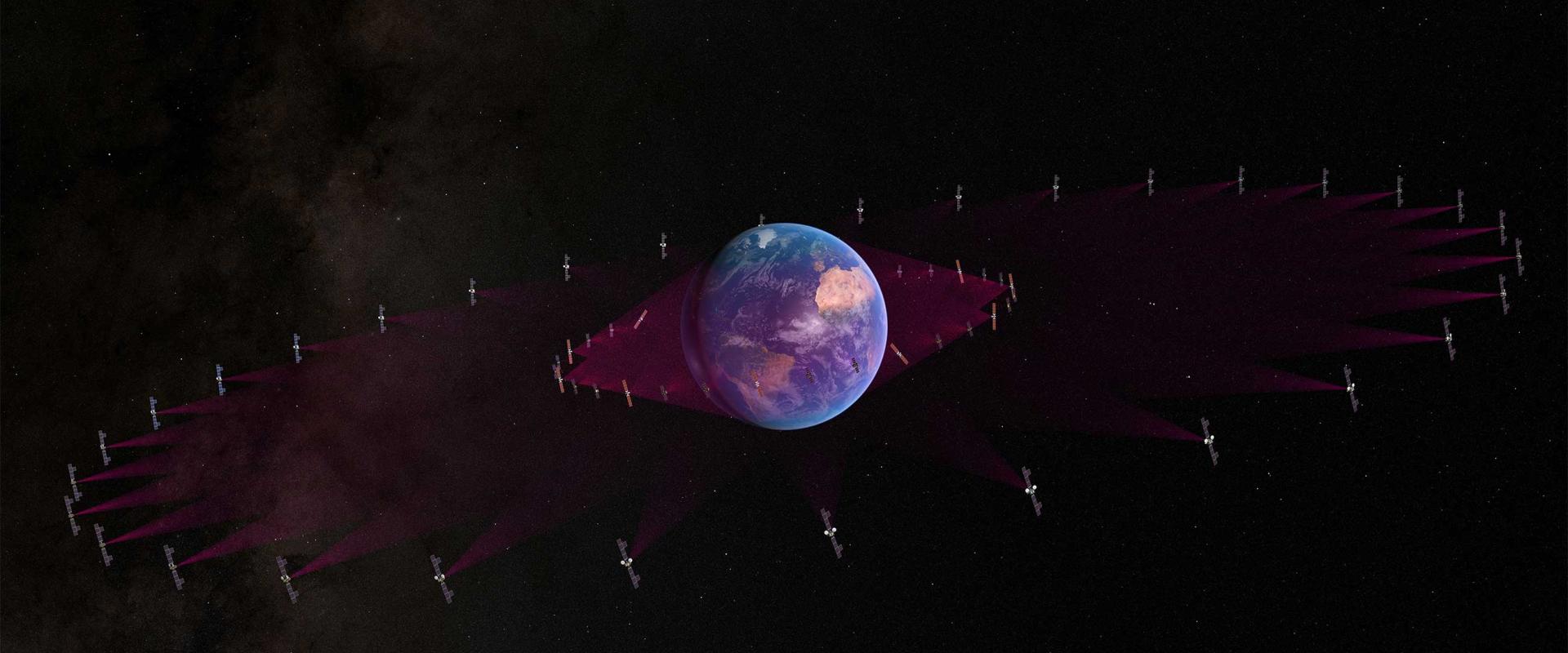The Power of Medium Earth Orbit (MEO) Satellites

In the information age, internet connectivity is a utility nearly as essential as electricity or clean water. It’s easy to get high-speed internet for an office building or an urban residence. But there are still places in the world where broadband infrastructure is hard to come by.
Consider the needs of people as diverse as:
- Firefighters in the West Coast of US
- Doctors in Africa
- Farmers in the Latin American countryside
Each of these groups can benefit from high-speed internet. However, each of them is not likely to be served by fiber optic, cable, or even 4G solutions.
“Uninterrupted and reliable communication is crucial to the ability of responders to do their job when, where, and how required. If connectivity and communication is denigrated in any way (e.g. cell towers damaged by a hurricane) the work needing to be done is also denigrated, unfortunately with potentially dire consequences… Satellite-based connectivity is the commonsense solution and should be readily available.”
Michael Lemm, Owner, FreedomFire Communications
Use cases like these (and many others) are ideal for medium earth orbit (MEO) satellite internet. Let’s explore what makes MEO unique, how it works, and who it can work for.
Defining Geosynchronous, Medium, and Low Earth Orbit Satellites
The use cases for satellite internet change depending on how far from Earth the constellation (a group of satellites) is orbiting. There are three broad categories, as you might have guessed: Geosynchronous Earth Orbit (GEO), Medium Earth Orbit (MEO) and Low Earth Orbit (LEO).
To get an idea of the tradeoffs between the three, imagine pointing a flashlight at a blank white wall. If you’re three feet from the wall, you get a bright light that covers a small area. If you step back to 10 feet, you cover more area, but with a dimmer light.
Low Earth Orbit (LEO) Satellites:
LEO satellites orbit at altitudes from 160 km to 2,000 km above the Earth. At this distance, satellites can provide low latency and high data transfer rates. However, at this altitude the satellites cover a smaller area at a time, which means you need exponentially more satellites in orbit for seamless coverage and receiving equipment must handoff to the next satellite passing overhead every 10 minutes or so.
Pros of LEO:
- Reduced latency
- High-speed transmission capabilities
- Potential for lower costs due to smaller ground stations
Cons of LEO:
- Need for a larger number of satellites (thousands) to maintain continuous coverage, necessitating smaller, more reproduceable, and less powerful satellites
- Limited coverage area per satellite necessitating a more extensive and rigid ground network
- More frequent handoffs between satellites—introducing the potential for jitter and packet loss
Geosynchronous Earth Orbit (GEO) Satellites:
GEO satellites operate thousands of kilometers above the earth, typically around 36,000 km, where a satellite’s orbital speed will match the rotation of Earth. These satellites offer the largest coverage area, but at the cost of increased latency and reduced signal strength.
Data transmission rates are also slower than the other options, simply because of the physical distance between the satellites and receivers.
Pros of GEO:
- Global coverage is possible with just three satellites
- No handoffs between satellites required
- Simplest earth station hardware
Cons of GEO:
- Higher latency
- Lower transmission speeds
Medium Earth Orbit (MEO) Satellites:
MEO satellites are positioned between 2,000 and 36,000 km. At this altitude, MEOs hit the “Goldilocks zone” for latency, transmission speeds, and coverage. While LEO requires thousands of satellites for global coverage, MEO needs just six. MEO satellites only need to hand off to the next satellite once per hour, compared to every ten minutes for LEO. And transmission rates are scalable to gigabits per second—far higher than GEO.
Pros of MEO:
- Predictable low latency, with reduced jitter
- High transmission rate
- Lower number of satellites required
- Less frequent handoffs
- Mobile receiving stations
Cons of MEO:
- More frequent handoffs than GEO
- Slightly more latency than LEO
Medium Earth Orbit (MEO) Satellites in Internet Connectivity
“Being able to bring connectivity anywhere on the globe also means bringing digital transformation to remote areas. With a combination of drones and digital transformation, workers no longer need to perform unsafe tasks. Communication is faster, more reliable, and with low latency.”
Peggy Smedley, editorial director, and president Specialty Publishing Media
It’s clear that MEO satellites strike a balance between latency and coverage. While they may not achieve the ultra-low latency levels of LEO satellites due to their higher altitude, MEO satellites notably outperform GEO satellites in terms of latency and throughput, and provide a more stable network environment than LEO’s many handoffs.
MEO satellites offer high enough data transmission rates to enable real-time applications like video conferencing, VoIP, and online collaboration.
Compared to the thousands of satellites required for stable LEO, MEO satellites offer far more efficient coverage. Just six satellites in MEO provide stable coverage for virtually the entire globe. This broader coverage area enhances network reliability by minimizing service disruptions and ensuring a more consistent internet connection across larger geographic regions.
All told, there is substantially less risk of service interruptions or outages with MEO satellites compared to GEO and LEO. This means reliable, ultra-high-throughput connectivity is finally sustainably achievable for remote and underserved areas.
MEO Upgraded: O3b mPOWER
SES operates a constellation of MEO satellites called O3b mPOWER. These satellites work with SES’s terrestrial gateways but are also compatible with customer-hosted gateways. The constellation offers throughput in the gigabits/second range, with a guaranteed minimum throughput rate for each client.
O3b mPOWER also offers unparalleled reliability, with services monitored by SES and reported to the customer 24/7, all backed by a stringent SLA.
“As digital technologies advance globally and rapidly for those who are connected to these services, the digital divide between the ‘digitally connected’ and the 3 billion who are not connected is likely to grow even larger. But that need not be the case. Satellite systems like SES’s O3b mPOWER offer the promise of a better tomorrow and a better outcome: to make digital connectivity available to anyone, anytime, anywhere.”
Kirk Borne, Founder, Data Leadership Group
Explore the Future of MEO Connectivity
The evolution of satellite technology is accelerating. Currently, our MEO constellation covers 96% of the global population—over 7.5 billion people—with more to come.
From emergency services to underserved rural populations to mining and energy companies, MEO satellites are connecting businesses and individuals in the most remote places on earth.
To learn more about how SES is shaping the future of telecommunications in the connected world, read more about us.




